
Review on 🏚️ Hollow Cavity Plasterboard by Anndason by David Fields

excellent device; Be careful with the thickness of your drywall
It took a little while to fully understand this tool (there were NO instructions in it, it was one of those "obvious" situations for the average smart student). Or not really a tool, but how to get it on a cavity wall expansion anchor after putting the anchor in the wall. After working with the tool and the anchor unseated, I found that you need to back off the anchor's mounting screw (bolt) slightly to allow the instrument's front (nose) clip to fit completely behind the head of the mounting screw. Once you have that clearance, pull the uncoated blade trigger in front of the plastic-coated movable handle to "zero" the tool, place the front (nose) mount under the head of the machine screw, and pull the front. (movable) coated handle. When you can no longer pull the front handle, the anchor should be pushed all the way against the back of the wall. If the minimum thickness of the wall you are using the anchor on was not greater than the actual thickness of the wall you are using it on. 5/8" thick drywall is no longer necessarily 5/8" thick, it can be slightly less. However, the L 3/16" Cavity Wall Expansion Anchor has a 5/8" to 1-1/4" grip range. I've used two of these anchors with this tool, but they loosened up a bit after using the tool .I checked the drywall thickness with the tool I have after drilling the anchor hole and it showed it was 5/8" thick. Well, this is a do-it-yourself device, it's not a micrometer, which measures up to .001". But still, it was a far cry from 1/2" thick drywall. So I'm thinking the drywall in my house may have been listed as 5/8" for the walls, it's actually a bit under 5/8" so a cavity wall anchor with a minimum thickness of 5/8" would not tighten. holds up well to the wall but that's not the tool's fault, the tool did what it was supposed to do and it's not its fault if there were problems with the cavity wall anchor or the drywall itself.
- Metal with non-slip rubber grips and anti-skid pads.
- not reliable
New products
Comments (0)
Top products in 🪝 Anchors
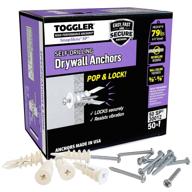
🔩 Крепеж SnapSkru, наполненный стекловолокном от TOGGLER

10 Review
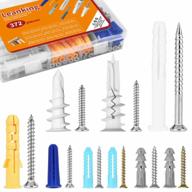
Набор из 372 шт. # 8 самосверлящих анкеров для гипсокартона - 7 различных пластиковых анкеров для тяжелых условий эксплуатации и 2 вида самосверлящих анкерных винтов для гипсокартона

16 Review
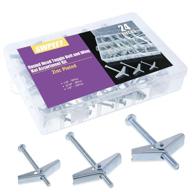
упрощение размещения гипсокартона с набором Swpeet разнообразных крючков для распашных дверей

10 Review
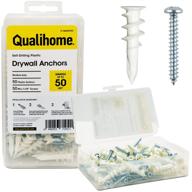
🔧 Комплект для сверления пластиковых гипсокартонных панелей высокого качества

9 Review
Another interesting products
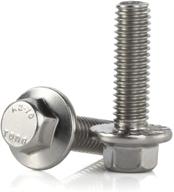
🔩 M6 1.0 Стальной фланцевый шестигранник с фланцем

8 Review

POWERTEC 4-дюймовый 20-дюймовый QTB1005 T-слот: Революционный высококачественный аксессуар для электроинструментов!

8 Review
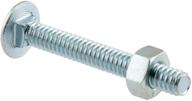
🚗 Коляска Prime Line Products GD52103

6 Review

🔩 Сложно найти быстрый крепеж 014973253790 - 4 предмета

7 Review

